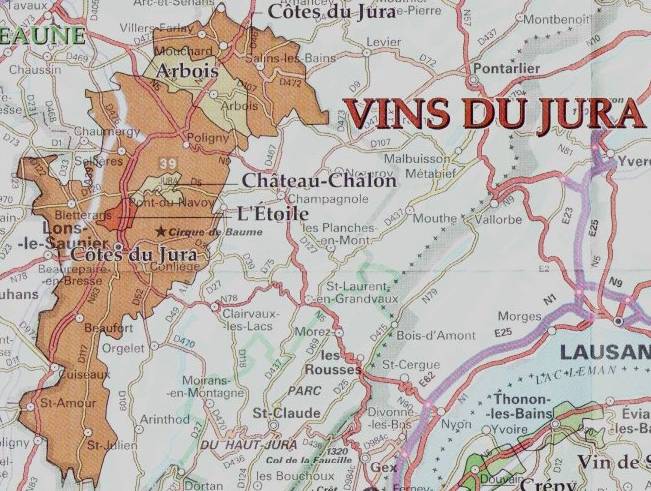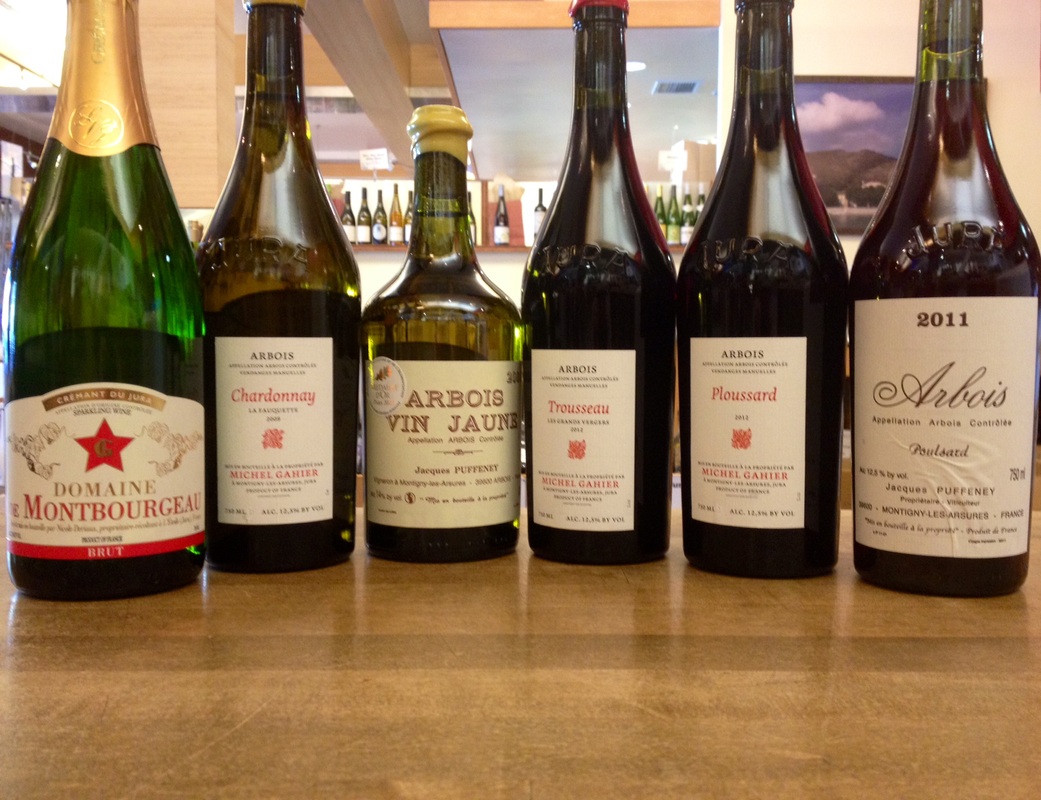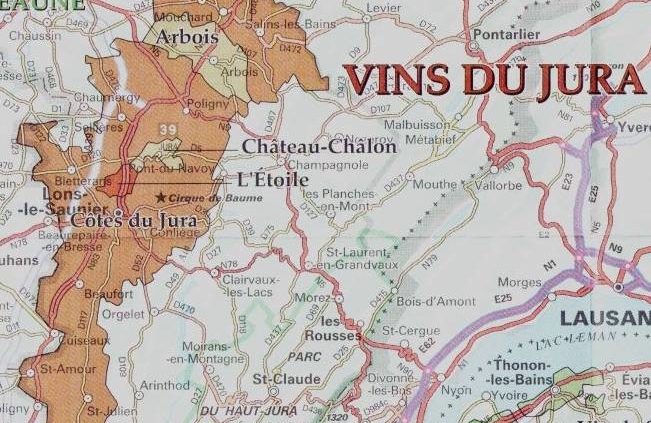Jura
Jurassic Wines: They’re Not Just for Dinosaurs Anymore (New Arrivals from Jura!)
Tucked in between Burgundy and Switzerland, the Jura wine region has, until recently, somehow managed to remain off the radar of most American consumers. It’s sort of understandable–this area tends to produce the favorites of wine geeks in search of something new and different. However, a bit of understanding can lead to appreciation by any wine drinker for these unique and often ‘funky’ wines.

Jura’s unusually cool climate allows the production of refreshingly crisp whites with mouthwatering, tart acidity and ultra-pale reds that astonish with their unexpected complexity. Sparkling wines, known as Crémant du Jura, thrive here as well, taking advantage of high acidity levels in the grapes to make wines that are similar to Champagne–but a lot more affordable. Easily recognizable Chardonnay and Pinot Noir beckon the uninitiated with their familiarity, a gateway to the more obscure grapes of the region–Savignin (known elsewhere as Traminer), Poulsard, and Trousseau.
Vin Jaune
The most distinctive, and probably best-known wine style of Jura is Vin Jaune, or ‘yellow wine‘. To make Vin Jaune, very ripe Savignin grapes must be harvested from low-yielding vines. They go through the usual white wine routine–conventional fermentation, secondary malolactic fermentation…seems pretty standard, at first. But here’s where things get crazy–the wine is then transferred to old Burgundy barrels that are filled incompletely, and placed in an area that is well-ventilated and therefore subject to temperature fluctuations. This is basically the opposite of how a winemaker would want to store any other type of wine during the vinification process, but for Vin Jaune, this is how the magic happens.
Owing to these unusual conditions, a thin layer of yeast (known as the voile) forms on top of the wine, similar to the flor in Sherry. Then the winemaker must sit patiently for at least six years, as the wine slowly oxidizes, protected by the voile from turning to vinegar. This patience is eventually rewarded with the resulting dry, aromatic, nutty wine–often with aromas and flavors of exotic spics such as turmeric, cardamom, and ginger, walnut, almond, apple, and sometimes honey, with a deep yellow-orange appearance.
For best results, Vin Jaune should be allowed to breathe for a while before serving, and paired with its neighbor and natural ally, Comté cheese.
The Wines of Jura
Cremants du Jura
A thorough exploration of the wines from the Jura region would comprise a wide variety of flavors and styles. It’s always nice to start off with some bubbles, and Domaine de Montbourgeau’s Crémant du Jura is an excellent choice. This 100% Chardonnay sparkler is light, fresh, and bursting with racy citrus acidity, making for the perfect aperitif or a great bottle for brunch.
Whites
To ease in to Jura whites, it’s best to start with a good old-fashioned actual white wine, before moving on to those zany orange ones. Michel Gahier’s 2009 Chardonnay ‘La Fauquette’ is a lovely example, brimming with Chablis-like minerality with undertones of dried apricot. Faint nutty aromas hint at the slightest bit of oxidation.
For an introduction to Vin Jaune, look no further than Jacques Puffeney’s 2006 Arbois Vin Jaune. Monsieur Puffeney, known to his peers and admirers as “the Pope of Arbois“, is one of the most well-known and revered vignerons in the region, and for good reason. This orange wine is produced only from the finest barrels after eight and a half years of aging under voile–two years longer than the minimum requirement. This enticing wine shows intense oxidation, dripping with honey, almond, and hazelnut aromas, dried apple flavors on the rich and creamy palate, and a surprisingly bone-dry finish.
Reds
It’s not just the whites of Jura that are worth talking about–the reds are pretty fascinating themselves. Often receiving less attention and shorter aging from their white counterparts, Jura reds (made from Poulsard, Trousseau, and Pinot Noir) differ wildly from what most American palates are accustomed to consuming, in that they are so light as to frequently be mistaken for rosés, yet highly complex on the nose and palate, filled with floral and peppery aromas and often a healthy dose of terroir–or less euphemistically, funk.
Trousseau, the most powerful of the Jura red grapes, is often used to add structure and color in a blend alongside Poulsard–but it can undoubtedly shine on its own as well. Michel Gahier’s 2012 Trousseau ‘Les Grands Vergers’ demonstrates intense, hearty blackcurrant fruit, cherry candy, earthy, smoked tea, and marked peppery and gamey notes, softened by hints of violet perfume.
Another bottling from Michel Gahier, 2012 Ploussard (a confusingly similar synonym of Poulsard) is much paler in color than the Trousseau, but is by no means lacking in flavor. The nose is lovely and floral, reminiscent of roses and ripe, juicy strawberries and cherries. The palate, however, is no delicate flower. Tannin and minerality give great structure to this faintly tinted wine, making it a “serious” wine that also happens to be very, very easy to drink. Another wonderful example is Jacques Puffeney’s 2011 Poulsard, which echoes many of the flavors in Mr. Gahier’s bottling, which may have something to do with the fact that they are neighbors. The Gahier leans a bit towards a more fruit-forward style, with the Puffeney shows a little more earthiness.

All of these Jura wines (and many more!) are now available on our shelves. Whether you are just beginning to explore this intriguing appellation, or have been drinking Jura wines since before they were cool, there’s definitely something for everyone in this un-sung, under-appreciated, and frequently under-valued region.

